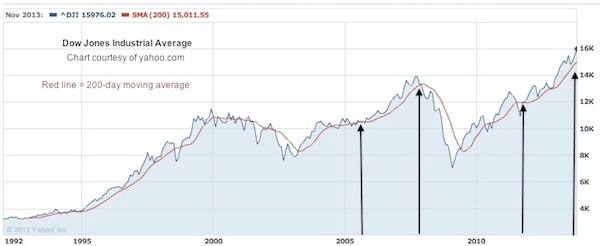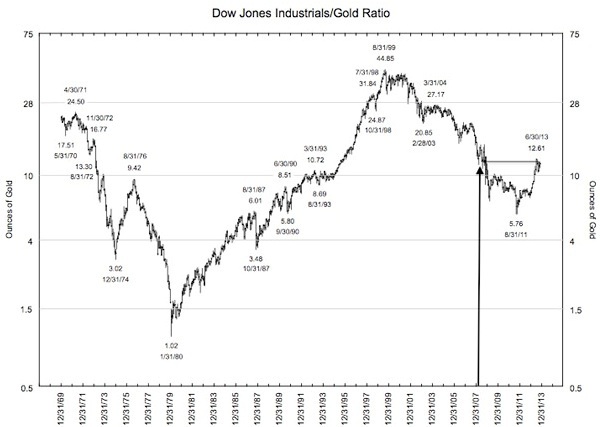Trust Your Instincts
Does the stock market’s relentless push higher seem unbelievable?
Now might be the time to listen to your intuition…
Like the nearly religious belief in the technology bubble, the dot-com boom, the housing bubble, and countless other bubbles across history, people are going to believe what they believe here until reality catches up in the most unpleasant way. The resilience of the market late in a bubble is part of the reason investors keep holding and hoping all the way down. In this market cycle, as in all market cycles, few investors will be able to unload their holdings to the last of the greater fools just after the market’s peak”. – John P. Hussman, Ph.D (Hussman Funds)
Over the past month or so, we have received an inordinate number of calls from clients saying some version of ‘this doesn’t feel right.’ Stocks charge higher almost daily, yet consumer confidence is at its lowest level in nine months, Morgan Stanley is predicting the worst holiday shopping season since 2008 (source), GDP growth remains anemic and unemployment stubbornly high. The foundation upon which rising stocks is dependent — a healthy, strong economy — has been thrown out the window as the Fed’s commitment to QE has displaced rational, fundamentals’ driven analysis. So it is no wonder you might feel a little queasy.
And digging deeper, there are a number of ‘coincidences’ that suggest such feelings might not be too far off the mark.

Consider this:
The Dow Jones Industrial Average has closed above its 200-day moving average (red line in graph above) for 24 consecutive months, dating back to November of 2011(annotated). The most recent period of sustained growth above the 200-day moving average occurred between October, 2005 – November, 2007 – a 25-month period (annotated). No one needs to be reminded of what happened to stocks in 2008.
Another interesting parallel deals with the percentage extension above the 200-day moving average. The DJIA, by and large, trades in a narrow range within 5% of its 200-day moving average. Deviations outside of this 5% range are typically followed by corrections. Most recently, in April, 2011, the DJIA closed 12.4% above its 200-day moving average. By September it had shed nearly 2000 points, declining from 12810.50 to 10913.4. Today, the DJIA is trading just shy of 7% over its 200-day moving average – not as high in percentage terms as it was in April 2011, but interestingly enough, almost identical to its magnitude in November 2007.
Ben Inker of GMO released some interesting analysis regarding stocks in the firm’s quarterly letter this past month. GMO has a reputation for impartiality, never being too bullish or too bearish, while controlling over $100 billion in assets for pension funds, endowments and accredited investors.
In his report Inker writes:
‘Combining the current P/E of over 19 for the S&P 500 and a return on sales about 42% over the historical average, we would get an estimate that the S&P 500 is approximately 75% overvalued.’
Ultimately concluding:
‘But enough about the details. The basic point for us remains the same – the U.S. stock market is trading at levels that do not seem capable of supporting the type of returns that investors have gotten used to receiving from equities. Our additional work does nothing but confirm our prior beliefs about the current attractiveness – or rather lack of attractiveness – of the U.S. stock market.’
Inker is not alone. While the bullish roar still drowns out the naysayers, this kind of analysis is popping up more and more frequently.
So what about gold?
Gold has been holding steady ever since its large drops back in April and June. With stocks performing so well, a lot of the attention gold had seen as it accelerated to $1900 in September 2011 has, for the time being, faded away. We have all heard the investment maxims: “Buy low, sell high. Don’t chase markets and, most of all always hedge your bets.” The only challenge is following that advice without being able to predict the future. All told, there is no way to know if stocks will push higher or sell-off, just as much as there is no way to know if gold has bottomed. But what we do know is that gold looks like a good value relative to stocks. Ironically enough, it is at its best relative value to stocks since…wait for it… January 2008 (see chart below) – two months after the DJIA reversed course after 25 months above its 200-day moving average.

Copyright © 2013 theChartStore.com
In short, the parallels between the current environment in stocks and the one in late 2007 are considerable. Even the ‘gut feeling’ my clients refer to today reminds me of conversations I had with clients back then. While I can’t say that I realistically think another 2008-style collapse is around the corner, I simultaneously can’t rule out the possibility. It seems the Fed is willing to throw any amount of money at the problem, and such circumstances may be sufficient in preventing such profound decimations of wealth as we saw then. But the old saying, “This can’t go on forever” seems more apt than ever.
It could start as small as ‘window dressing’ into the end of this year, gain steam with another debt debate this January, and reach a full-fledged outbreak if fractures in our recovery illuminate the reality that Fed intervention has had little to no meaningful impact on the actual economy. With such a realization, even expansions in QE may not be enough to save the stock market.
I’ll conclude with two parting thoughts:
- It is better to be a little too early than even a moment too late. Most investors believe that they will always be able to liquidate their positions – to get out in time. In a market panic, desperate sellers will quickly outnumber willing buyers and liquidity can effectively disappear.
- You’d be hard pressed to find a single investor who didn’t wish they had divested from stocks in favor of gold the last time the investment landscape looks like it does today – November 2007 – January 2008.
********
(Courtesy of http://www.usagold.com )
















